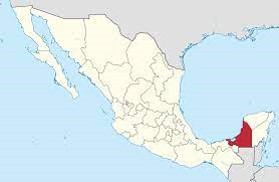Campeche State

Campeche contributes 5.1% of Mexico's total GDP. Only 3.3% of the state's land is used for raising crops due to the soil composition. Over ninety percent of cropland is used for seasonal crops such as corn with the rest used for perennials such as fruit trees. The most important crop is corn, followed by rice and sorghum. Other important crops include jalapeño chili peppers, watermelon, sugar cane and various tropical and non-tropical fruit-bearing trees, especially citrus and mango. Most cattle are raised in the center and south of the state for both meat and milk products and account for the most product by volume.
In the north, most commercially raised livestock is domestic fowl mostly chickens and turkeys, but domestic fowl is raised in most rural homes all over the state. Sheep and goats are raised sparsely all over the state, depending on local vegetation. Forestry, including the extraction of precious tropical hardwoods, remains an important economic activity despite the degradation of many of the state's forests. Commercial fishing is mostly done along the coast, with shrimp being the most valuable catch, followed by crustaceans and mollusks. This is mostly done in the coast reason, where most of the economy outside of oil production relies on fishing and the building and repair of fishing boats.
The secondary sector of the economy (mining, construction and industry) is almost entirely concentrated in the coastal area of the state in the municipalities of Campeche, Carmen and Champotón. Mining, mostly oil production, accounts for 52.8% of the state's GDP. This oil lies off the coast of the state, in a shallow water section of the Gulf of Mexico called the Sonda de Campeche. Campeche oil and gas production accounts for 37% of Mexico's total with crude oil alone accounting for 76% in absolute numbers. Campeche does not have metal deposits but it does have deposits of building stone, such as sandstone, marble and limestone, sand, gravel, lime, clay and other minerals. Most deposits are located in the municipalities of Hopelchén, Champotón and Calakmul. In the far north of the coast region, there are important deposits of salt. Construction and manufacturing account for 6.7% of the state's GDP. The most common type of industry relates to food and food processing including seafood, soft drinks, cookies, flour, sugar and honey. Another common industry is that of building materials such as cinderblock, wood products and the processing of building stone. Most industries are small with little financing for technology and growth. Since the 1990s, factories of the “maquiladora” type have opened in the state, such as the Calkiní Shirt Company in Tepacan, Calkiní, Textiles Blazer in Lerma, Campeche, Quality Textil de Campeche in Becal, Calkiní and Karims Textile and Apparel México in the city of Campeche.
Commerce and services account for 33.2% of the state's GDP. The commerce sector of the economy is mostly traditional with small establishments catering to local or regional needs. In the larger cities, supermarkets and malls can be found. Most commerce with entities outside of Campeche is in seafood, agricultural and forestry products. The state has thirty-four traditional public markets. All petroleum products are marketed by the national oil company PEMEX. The state has about five hundred businesses dedicated to tourism, about half of which are restaurants, a little less than a quarter bars and a similar number of handcraft shops. There are 126 major hotels, mostly in the municipalities of Campeche, Ciudad del Carmen and Champoton.
GDP CAMPECHE 34 777 million of USD






